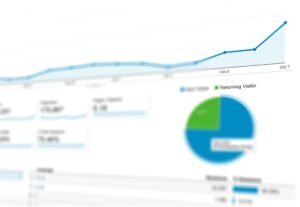Can you guess what’s dragging your site down? It’s those sneaky toxic backlinks! These unwanted links, lurking on spammy websites, are like adding bad ingredients to your favorite recipe—they ruin everything! I’ll show you how toxic backlinks can mess with your search rankings and why cleaning them up is like spring cleaning for better SEO. So, are you ready to ditch the toxicity and clean up backlinks to boost your site’s reputation? Let’s dig into the ins and outs of cleaning up those pesky backlinks and get your SEO game on point!
Understanding Toxic Backlinks and How to Clean up Backlinks
Let’s get into how to clean up backlinks. Think of them as pesky weeds in your garden. They’re links from spammy sites, or those existing only to bend search engine rules. Toxic backlinks often appear on websites filled with nonsense or have spammy comment links. Imagine those annoying, irrelevant comments trying to sneak in a link.
Plus, you have overoptimized anchor texts—links that repeat the same keyword endlessly. They’re like shouting for attention, but in all the wrong ways!
What happens when these toxic backlinks linger? They can harm your website’s reputation. Search engines like Google notice these links and suspect something fishy. This can lead to penalties, marking your site as untrustworthy. Your site’s ranking might plummet, making it harder for people to find your content.
Identifying Harmful Backlinks: Tools and Techniques

Want to keep your website in peak condition for SEO? Regular backlink audits are like routine check-ups for your site’s health. They’re key to spotting harmful backlinks. Luckily, several tools can help you with this process.
1. Ahrefs
Ahrefs acts like a detective for your backlinks. It has powerful audit capabilities to explore your link profile. Here’s what it offers:
- A comprehensive overview of your backlink profile
- Identification of links from low-quality domains
- Flags over-optimized anchor texts
2. SEMrush
SEMrush is your tool for understanding backlink quality. It provides insights into authority, relevance, and spam scores:
- Evaluates referring domains’ authority
- Analyzes the relevance of linked content
- Pinpoints high spam score links
3. Moz
Moz is great for detecting toxic backlinks. It simplifies identifying harmful links with these features:
- Provides a spam score for each link
- Analyzes linking domains’ quality
- Helps prioritize links for further investigation
Steps to Remove Bad Links and Improve SEO
Why bother to clean up backlinks? They’re like old gum stuck under your shoe, slowing you down and irritating search engines. Bad links can tarnish your site’s reputation and disrupt SEO efforts. Cleaning them up is vital for top search result rankings.
Here’s how to clean up backlinks:
Conduct a backlink audit to spot harmful links.
You can’t fix what you don’t know. Use tools like Ahrefs or SEMrush to explore your backlink profile. Look for links from spammy sites, low-authority domains, or over-optimized anchor texts. These are your targets.Contact webmasters to request link removal.
Think of it as politely asking a neighbor to lower their loud music. A kind, clear message can achieve a lot. Reach out to site owners or webmasters and ask them to remove the link pointing to your site.- Create and upload a disavow file using Google’s Disavow Tool.
If all else fails, use the big guns. Visit Google Search Console and use the Disavow Tool. Create a file listing links Google should ignore, then upload it. Regularly monitor and audit your backlink profile.
Prevent bad links from coming back! Maintain regular audits to keep a clean profile—like brushing your teeth, do it often for freshness.
Utilizing Google’s Disavow Tool Effectively
Struggling with stubborn links and want to clean up backlinks? Google’s Disavow Tool is your secret weapon to tell Google to ignore them. It’s like giving your site a fresh start by cutting off bad vibes. However, reserve disavowing a last resort. Attempt contacting webmasters first for link removal.
If that doesn’t work, it’s time to disavow. This tool is valuable when links risk manual penalties or interfere with Google’s algorithm. Here’s how to start with a disavow file:
- Compile a list of URLs to disavow.
- Correctly format the list for Google.
- Upload the file in Google Search Console.
Maintaining a Healthy Backlink Profile for Long-term SEO Success
This is how to be sure you did clean up backlinks. Regular audits and monitoring are like regular check-ups for your website. Why are they key? They help identify suspicious links that could be harming your SEO. It’s about catching problems early before they escalate. Consistent monitoring keeps you ahead, maintaining a top-notch backlink profile and aiding in climbing search engine ranks. Monitoring isn’t a one-time task; it’s an ongoing routine for a thriving site.
How to keep that backlink profile clean? Start by creating valuable content that attracts links naturally. It’s like being the popular kid everyone wants to associate with. When your content excels, quality sites will want links with you. Engage in ethical link-building, like guest blogging or collaborations with reputable sites. These methods help you gather good links and forge a strong network of trusted connections.
Avoid black hat SEO tactics for long-term success. Despite quick promises, shortcuts like buying links or using link farms can harm your site’s reputation. A proactive approach to managing backlinks keeps you in good standing with search engines. Stick to genuine connections, and your site’s rankings will be great. Let’s keep things ethical and focus on quality for a stellar backlink profile!
Conclusion
To maintain strong SEO, you need to clean up backlinks. Toxic backlinks can lead to penalties and ranking drops, making it crucial to address them promptly. With tools like Ahrefs, SEMrush, and Moz, you can easily identify and manage harmful links that may be dragging your site down.
Maintaining a healthy backlink profile requires consistent effort. Regular audits, creating valuable content, and steering clear of shady tactics are key to long-term success. Using tools like Google’s Disavow Tool can make a significant impact when dealing with stubborn links. Stay proactive, and your SEO will thrive!
FAQ
How do I clean up backlinks on Reddit?
To clean up backlinks on Reddit, identify the links that don’t add value. Engage with the Reddit community and focus on sharing genuine content. Avoid spamming to protect your backlink profile.
How do I clean up backlinks using Semrush?
Removing toxic backlinks with Semrush involves identifying them through a backlink audit. Then, reach out to site owners or use the Disavow Tool if manual removal isn’t possible.
How to remove backlinks in WordPress?
To remove backlinks in WordPress, locate the link within your content, and edit the post to remove or update it. Consider a plugin for batch removal if you have many links.
What is the Google Disavow Tool?
The Google Disavow Tool allows you to tell Google to ignore specific backlinks. Use it for difficult-to-remove bad links to avoid potential penalties.
How do I disavow backlinks?
To disavow backlinks, compile URLs into a disavow file, format it correctly, and upload the file to Google Search Console. Use sparingly and only after trying manual removal.




